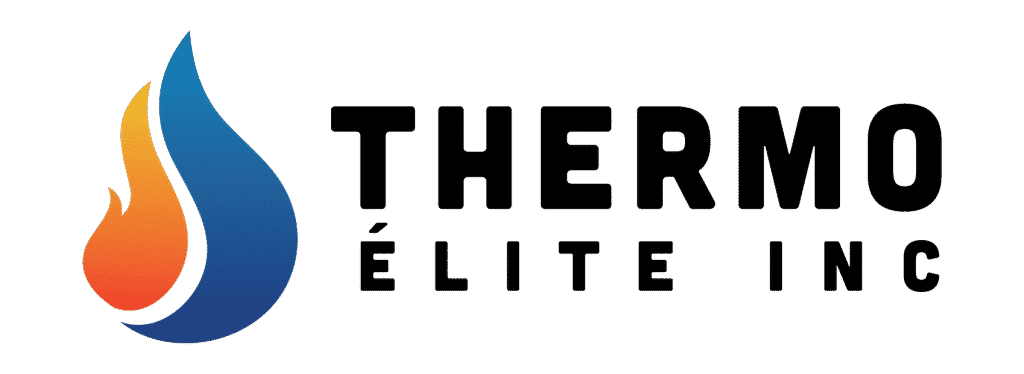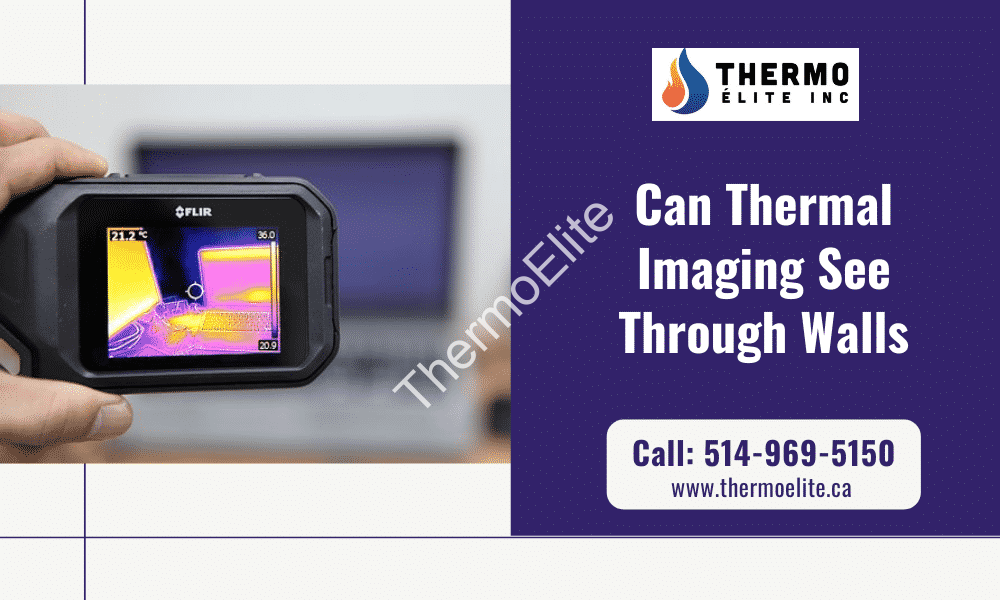It might sound like a question straight out of a Sci-Fi story, but the answer is a big NO! There has been a lot of misinformation being spread throughout the years by popular media that thermal or infrared cameras can help you see through the walls. As the name suggests, a thermal or infrared camera is a device that is based upon heat sensing, and you’ll never be able to see anything beyond the wall. It does allow you to detect water, human beings, animals, or even electrical equipment behind the wall however. This detection is possible when the wall is thin enough, and the temperature difference is significant.
Let us look at what you can see and not see using a thermal camera and bust all such myths associated with one of the most efficient inspection devices of the 21st century.
As mentioned earlier, thermal cameras can only detect heat, and based on the temperature ranges picked up by the sensor, assign colors. Thermal cameras will not allow you to see through the walls, so drop the idea of becoming an MI5 agent! Usually, walls are thick enough to block all types of infrared radiation from the other side. Pointing the thermal camera at the wall will only help you detect heat from the wall, and it won’t give you any idea as to what’s beyond that. The thermal imager will be able to detect if there’s a significant temperature difference on the wall’s surface. Maintenance professionals often use infrared imaging to detect water leakages and insulation leaks without damaging the wall.
Using Thermal Imaging in Industries
Thermal imaging is used in various industries, including manufacturing, electrical sub-stations, water treatment plants, and even defense. The wide range of uses has made thermal imaging an essential tool for inspection. The best thing about thermal imaging is that it’s a completely non-invasive technology, i.e., an inspection of an object is possible without causing any damage. Electrical panels, water treatment types of equipment, transformers, and any continuously operational equipment often undergo wear and tear, which have to be addressed before breaking down completely.
Can thermal imaging cameras help you see through smoke?
Thermographic cameras are based on the principle of heat sensing. Infrared cameras can easily detect heat even when an area is filled with smoke. Firefighters across the world use thermographic cameras to detect fire at places that are shrouded in smoke. Thick smoke makes it difficult for human beings to visually detect fire raging in other sections of a room or building on fire but can be easily detected by thermal imaging cameras. First responders or firefighters can navigate through smoky environments by using infrared imaging tools.
Is it Possible to Navigate Through Fog with Thermal Imaging?
Rain and fog can severely restrict mobility, and it can also affect a thermal camera’s range because the radiation gets scattered by the water droplets. Advanced infrared cameras can penetrate fog effectively, more than the human eye or any other visual cameras. Some top models of cars include thermal imagers in their sensor suites to offer better mobility.
Irrespective of whether you’re moving through a thick fog or driving through smog, thermal cameras can be highly effective in helping you drive safely without hitting pedestrians or even animals.
Thermal imaging can’t penetrate glass.
Yes, that might be a disappointing fact for some enthusiasts, but thermal imaging tools cannot penetrate the glass medium. You won’t detect any human movement or temperature difference in pointing a thermal camera towards a glass door or window. Glass is considered too reflective material, which is why it only exhibits the reflected temperature of objects, instead of allowing the radiation to pass through. Similar properties are shown by other reflective materials such as polished metal.
Your DSLR can penetrate the glass and capture the objects beyond the glass, but a thermal camera will only be able to capture your body heat reflected by the glass.
What about concrete?
This is similar to the first question we answered about walls, and the answer is no. Thermal cameras won’t detect anything on concrete, but noticeable temperature differences can be captured by it. Thus, if there’s an underground pipe leakage or infestation under the concrete floor, it can be detected with thermal cameras.
Can infrared cameras penetrate metal?
Metals can play weird tricks with the thermography tools, as shiny metals are bound to reflect the infrared radiation acting as an infrared mirror. Like glass, polished or smooth metal has reflective properties and will lead to severe imaging problems during the inspection of machinery or pipes. However, thermography cameras are useful when inspecting metal coated with other materials or oxidized metals as they don’t exhibit infrared radiation, and measurements can be quickly taken. It would help if you kept in mind that thermal cameras are incapable of seeing through the metal objects; however, conductive metals can reveal cold or hot sports inside it.
Is it possible to see through trees by using a thermal camera?
It’s impossible to detect objects behind the tree trunk, but thermal imaging can help detect animals and humans in a densely forested region. The search and rescue teams often deploy thermal imaging tools to detect heat signatures in large swathes of forested areas. Even though infrared tools can’t penetrate wood, it can easily spot human beings and animals, even in densely forested areas.
What about penetrating plastic?
Thermal cameras can’t penetrate thicker plastic materials, but if you’re trying to detect movement or objects with higher temperatures beyond a thin plastic sheet, you can easily do that. A plastic sheet can usually block visible light, and infrared radiation can easily penetrate the plastic.
Is it possible to use thermal imaging in the dark?
Yes, definitely. Thermal imaging works on the principle of heat sensing and has nothing to do with darkness or light. This is why these infrared tools are used by security agencies and defense personnel to detect movements in the dark.
Is it possible to hide from thermal imaging devices?
It is kind of impossible to hide from an infrared camera as it doesn’t rely on a visible light source to create images and so it’s neither affected by darkness or harsh weather conditions. Thus, even if you try to hide from these cameras, the chances are slim that you would escape because infrared cameras can easily detect the temperature change.
Security agencies like police and armed forces worldwide use thermography tools to spot criminals or chase them in the dark using thermal imaging cameras. They’re becoming more and more reliant on the latest thermal imaging devices that make their life easier. Military personnel uses thermal equipment in their aircraft or fieldwork to detect body heat and ensure border areas’ safety and security.
A thermal camera can detect you even if you hide behind a bush or seek refuge in a thick fog because it would immediately detect your body temperature and create a thermal image. Thus, it’s extremely tough to hide when there’s a thermal imaging device tracking you. However, hiding behind a glass sheet can make the thermal cameras ineffective.
Thermal Cameras – A Variety of Applications
Thermal imaging cameras are put to a variety of uses, and some of the most popular ones include:
- Electrical systems maintenance – Thermal imaging cameras can pick temperature anomalies resulting from the overheating of faulty components. A thorough inspection can help the inspectors detect the faulty components and carry out preemptive maintenance and repair.
- Plumbers – Pipelines and drainage systems often undergo wear and tear, which leads to water leakages. Plumbers can use thermal imaging cameras to detect the leakages and carry out repair works without damaging the wall or concrete floor.
- Construction – Buildings can suffer from various types of damages and issues easily detected by thermal imaging.
- Pest management – Pest infestations lead to significant temperature anomalies in a building or wall, easily detected by thermal imaging cameras.
- Fire Fighters – As mentioned earlier, firefighters often use thermal imaging cameras to navigate smoky areas and detect fire.
Thermal imaging cameras are expensive but useful tools that can be deployed in various fields. However, you must choose a high-quality product so that you’re able to detect and record the details accurately. Accurate measurement is essential because there’s very little room for error, and the stakes are high when you’re inspecting expensive mechanical or electrical components.
Thermal imaging is an advanced technology to identify, measure, and visualize the heat patterns, especially in poorly lit places or in the dark. It would be best to consult a certified thermographer before moving forward on any large scale purchases.



Add Comment